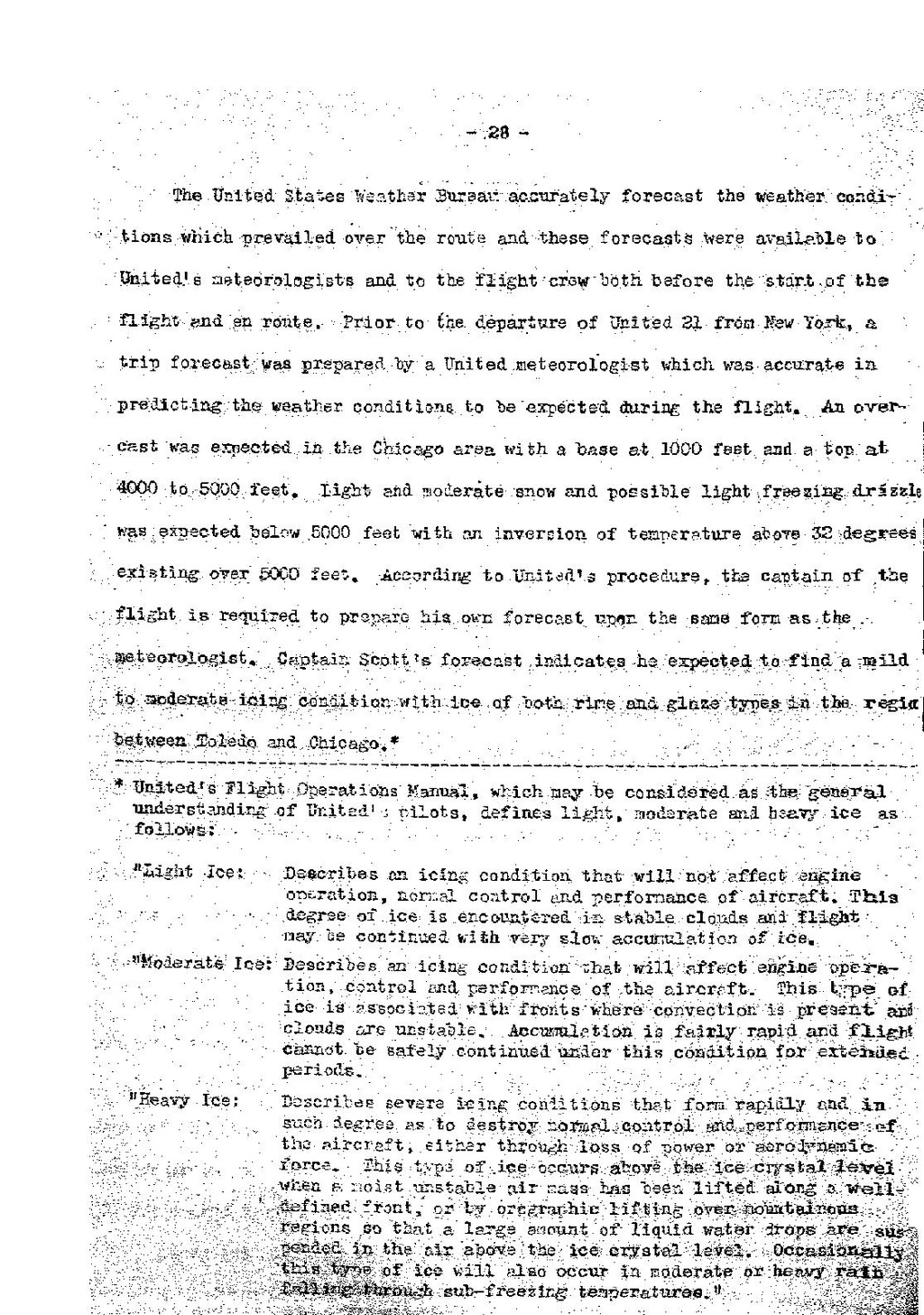- 28 -
The United States Weather Bureau accurately forecast the weather conditions which prevailed over the route and these forecasts were available to United's meteorologists and to the flight crew both before the start of the flight and en route. Prior to the departure of United 21 from New York, a trip forecast was prepared by a United meteorologist which was accurate in predicting the weather conditions to be expected during the flight. An overcast was expected in the Chicago area with a base at 1000 feet and a top at 4000 to 5000 feet. Light and moderate snow and possible light freezing drizzle was expected below 5000 feet with an inversion of temperature above 32 degrees existing over 5000 feet. According to United's procedure, the captain of the flight is required to prepare his own forecast upon the same form as the meteorologist. Captain Scott's forecast indicates he expected to find a mild to moderate icing condition with ice of both rime and glaze types in the region between Toledo and Chicago.[1]
- ↑ United's Flight Operations Manual, which may be considered as the general understanding of United's pilots, defines light, moderate and heavy ice as follows:
"Light Ice: Describes an icing condition that will not affect engine operation, normal control and performance of aircraft. This degree of ice is encountered in stable clouds and flight may be continued with very slow accumulation of ice. "Moderate Ice: Describes an icing condition that will affect engine operation, control and performance of the aircraft. This type of ice is associated with fronts where convection is present and clouds are unstable. Accumulation is fairly rapid and flight cannot be safely continued under this condition for extended periods. "Heavy Ice: Describes severe icing conditions that form rapidly and in such degree as to destroy normal control and performance of the aircraft, either through loss of power or aerodynamic force. This type of ice occurs above the ice crystal level when a moist unstable air mass has been lifted along a well-defined front, or by orographic lifting over mountainous regions so that a large amount of liquid water drops are suspended in the air above the ice crystal level. Occasionally this type of ice will also occur in moderate or heavy rain falling through sub-freezing temperatures."
